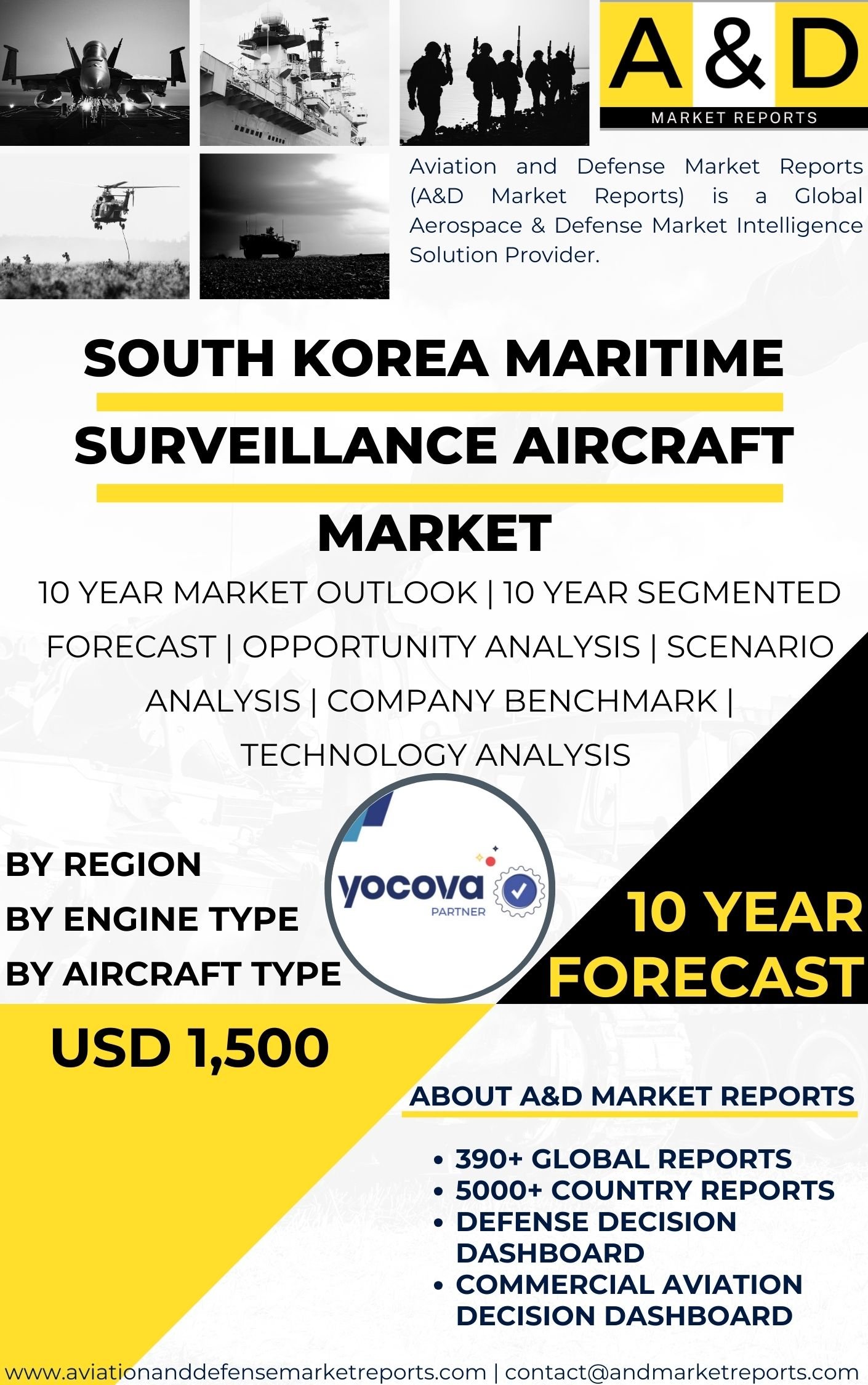Description
The South Korea maritime surveillance aircraft market is a crucial segment of the country’s defense industry, providing advanced aerial surveillance capabilities for monitoring and safeguarding its maritime borders and exclusive economic zones (EEZ). Maritime surveillance aircraft are specifically designed to conduct reconnaissance, intelligence gathering, and surveillance operations over vast maritime areas, supporting maritime security and national interests. South Korea’s focus on indigenous development, strategic partnerships, and technological innovation has positioned it as a significant player in the global maritime surveillance aircraft market.
Maritime surveillance aircraft play a critical role in modern naval operations, offering a comprehensive view of maritime activities, including detecting and monitoring vessels, detecting illegal fishing, identifying potential security threats, and conducting search and rescue missions.
Indigenous development has been a cornerstone of South Korea’s defense strategy, and the maritime surveillance aircraft market is no exception. The country’s defense industry, represented by companies such as Korea Aerospace Industries (KAI) and Hanwha Systems, has made significant progress in developing advanced maritime surveillance aircraft platforms tailored to meet the specific requirements of the South Korean Navy.
One of the key indigenous maritime surveillance aircraft in South Korea’s inventory is the KAI KUH-1 Surion. While primarily designed as a utility helicopter, the Surion has been modified and equipped with advanced maritime surveillance sensors to serve in a multi-role capacity, including maritime patrol and surveillance. The Surion’s versatility and modern sensor suite make it an essential asset for monitoring South Korea’s maritime domains and supporting various naval operations.
Beyond domestic requirements, South Korea actively seeks strategic partnerships with international defense companies to enhance its maritime surveillance aircraft capabilities. Collaborations with global manufacturers facilitate technology transfer, joint research, and the integration of foreign systems into South Korea’s indigenous maritime surveillance platforms. These partnerships contribute to the continuous improvement of South Korea’s maritime surveillance technology and reinforce its position in the global defense market.
Moreover, South Korea’s commitment to innovation and research and development (R&D) has driven advancements in maritime surveillance aircraft technology. The country invests in R&D programs to improve the performance, range, endurance, and capabilities of its maritime surveillance platforms. Technological improvements focus on enhancing sensor capabilities, communication systems, and data processing, ensuring that South Korea’s maritime surveillance aircraft remain effective and reliable in monitoring maritime activities.
As part of its broader defense industry, South Korea’s maritime surveillance aircraft market extends beyond domestic needs. The country actively exports maritime surveillance aircraft to other nations, generating revenue and expanding its influence in the global defense market. Successful exports demonstrate the reliability and performance of South Korean-made maritime surveillance platforms, contributing to the growth of its defense industry.
To ensure optimal utilization and proficiency in operating maritime surveillance aircraft, South Korea places significant emphasis on training and skill development for its naval aircrews. Training programs focus on familiarizing aircrews with the operation, maintenance, and tactical employment of maritime surveillance aircraft, ensuring that these assets are effectively employed in maritime surveillance missions.
Moreover, cybersecurity is a significant consideration in the maritime surveillance aircraft market, as modern platforms often incorporate digital components and may be vulnerable to cyber threats. South Korea invests in robust cybersecurity measures to protect its surveillance infrastructure and ensure the safety and security of maritime surveillance aircraft operations.
In conclusion, the South Korea maritime surveillance aircraft market plays a crucial role in enhancing the country’s maritime security and naval operations. Indigenous development, strategic partnerships, and innovation have allowed South Korea to create advanced maritime surveillance platforms that meet the specific needs of its military. From monitoring maritime activities and detecting potential security threats to supporting search and rescue missions, these aircraft provide South Korea with comprehensive situational awareness and enable effective maritime surveillance. As the defense industry continues to evolve, South Korea’s dedication to advancing its maritime surveillance aircraft technology will remain essential in safeguarding its maritime interests and maintaining its position as a major player in the global maritime surveillance aircraft market.




